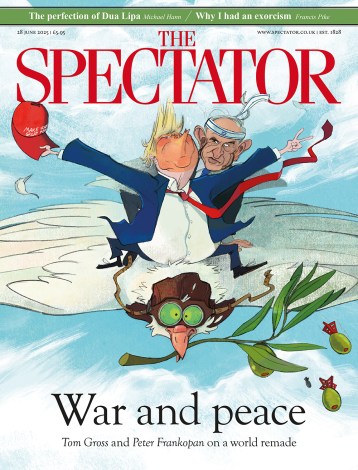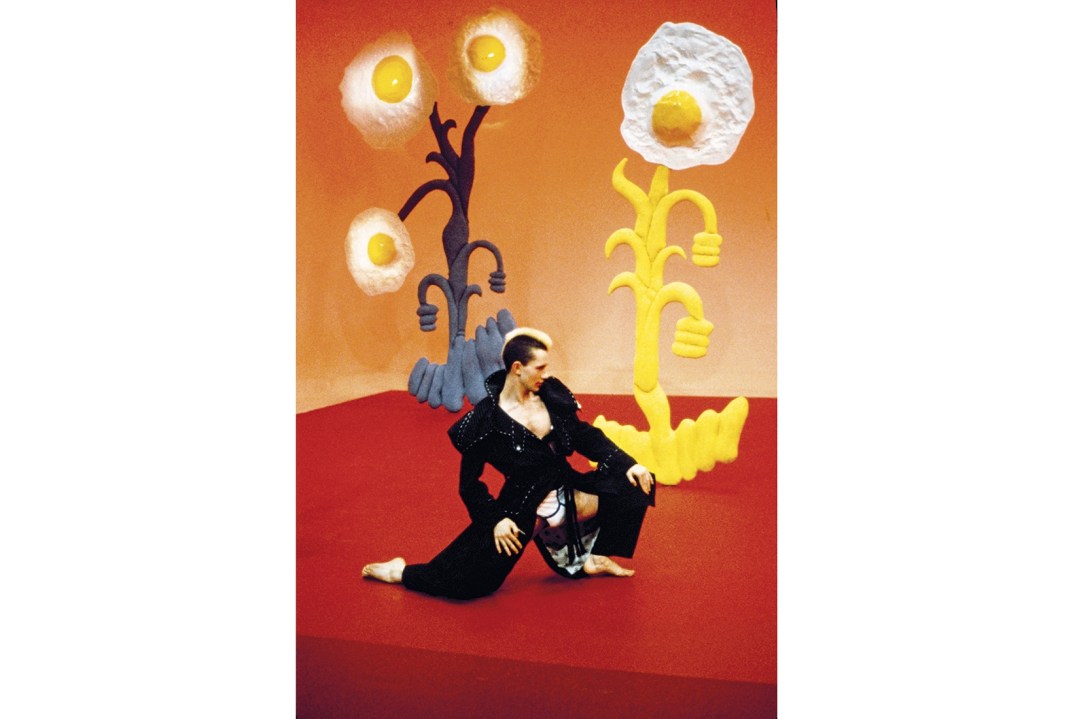How did the universe begin? Did the great god Bumba vomit us up, as the Kuba believe? Or did we emerge, as the Navajo think, from a cloud of coloured mist? Or do we listen to the ancient Egyptians who thought the curtain opened on a giant cobra slithering across the oceans?
Perhaps it starts with a computer screen: Milky Way wallpaper, a folder labelled ‘History_Of_Universe’ and a sharp intake of breath. That’s how one of the great video artworks of the 21st century begins anyway. This summer New York’s Museum of Modern Art uploaded Camille Henrot’s ‘Grosse Fatigue’ (2013) to its YouTube channel. It gives you the birth of the world in 13 minutes.
This is a show to bust through those Covid blues. Who needs Pfizer when you have Michael Clark?
Henrot’s syncretic pile-up of origin myths is told through a mystery, mostly invisible, cursor, opening and closing videos, windows and websites with the manic energy of a student with two hours to go before exams. The film is contrapuntal — the title riffs off Beethoven’s Grosse Fuge — so you can enjoy its unsettling of the Enlightenment project, or just feast on the digital stream that pours forth, a rushing waterfall of ideas, associations and possibilities, funny, tart, heady, exhausting. The definitive internet experience.
When people ask what the point of video art is, or what is it that differentiates video art from film, show them this. Video art is to film what poetry is to prose. And just as a world without verse would be pretty heinous, so would one that didn’t have space for people to fool around with the narrow rules of narrative cinema.
Not all video is quite so easy to defend. The early stuff can be forbidding. If you enjoy eating your greens, head to the second room of Tate’s Bruce Nauman show: full of dry investigations of space and the nature of art that only once or twice break out a smile. Nauman is the Beckett of video art: pioneering, pithy and bleak. It’s not for everyone. And as the shouts and screams that bleed into the first rooms from further on hint, these early works are part of a nightmarish continuum as much as a conceptual one.
If this all sounds a bit too 2020 for some of you, let me also say that the curation is *chef’s kiss*, building an amazing cumulative power from works that individually can feel slight. The show’s logic is that of the horror film. The sounds tug at your ear, luring you on and on — past the neon hanged man and his boner, past the clowns and cages — until, as with all horror, you’re face to face with a beast. A room full of them — spinning, angry, frightened bald heads yelling: ‘Feed Me, Eat Me, Anthropology’, ‘Help Me, Hurt Me, Sociology’, ‘Feed Me, Help Me, Eat Me, Hurt Me’. Is this what being waterboarded is like? It’s certainly what Twitter is like. If social media has a subconscious, ‘Anthro/Socio (Rinde Spinning)’ (1992) is a prophetic portal into it.
Of course at the moment everything is video art. Everything is bad film. We’re overwhelmed with opportunities to watch art forms that have been squished into the tight jeans of livestreaming. And it’s deeply unattractive. Which is why video art is important. The Zoomification of the arts is a problem of form. We’re so used to being able to film anything, and being told all you need is a camera and laptop to do it, that we forget that not everything should be filmed. Or at least not until you’ve figured out a language for it. Video art reminds you to consider all parameters, just as poetry asks you to weigh up every syllable.
The Barbican’s current art show is stacked with video. An attempt to wrestle into some resurrectable shape the surreal, infectious, multi-dimensional choreography of Michael Clark, a Royal Ballet rebel who gathered round him some of wildest people alive in 1980s Britain. Though even the stiff archival films that you strain your eyes to watch on tiny screens will have fans salivating, it’s the feral video art that really captures this insane scene. I could have watched Clark in platforms, romper suit and bottle-green cap, bum out, jerking through a forest of egg-trees, ecstatic, spasmodic, electric, Mark E. Smith yelping away like a small dog, and Leigh Bowery, trussed up like a gimp, playing ‘Knees up Mother Brown’ on a white grand piano, all day. Dada came late to Britain, which at least meant it was captured on film by Charles Atlas in ‘Hail the New Puritan’ and Cerith Wyn Evans in his explosive early shorts. A show to bust through those Covid blues. Who needs Pfizer when you have Michael Clark?
Video is an art form that feels unpopular, but isn’t. Take Sunday-night hit Lovers Rock. Artist-director Steve McQueen has often played it safe outside galleries. But the second in his Small Axe series was as audacious as TV drama gets. Never will you see a prime-time offering with so little plot receiving so much acclaim. Freed from story, McQueen could focus on mood, texture, the detailed intimacies, strategies, scansion and grammar of a dance floor. This was an 1980s house party that you could really feel, through hands, hips, sweat, scent and song. Sensual, durational, musicological, this was video art in all but name, closer to the work of Ragnar Kjartansson than Russell T. Davies. And it showed how transcendental TV could be if it just stopped trying to bribe those too lazy to read books (like me) with cheap stories.







Comments